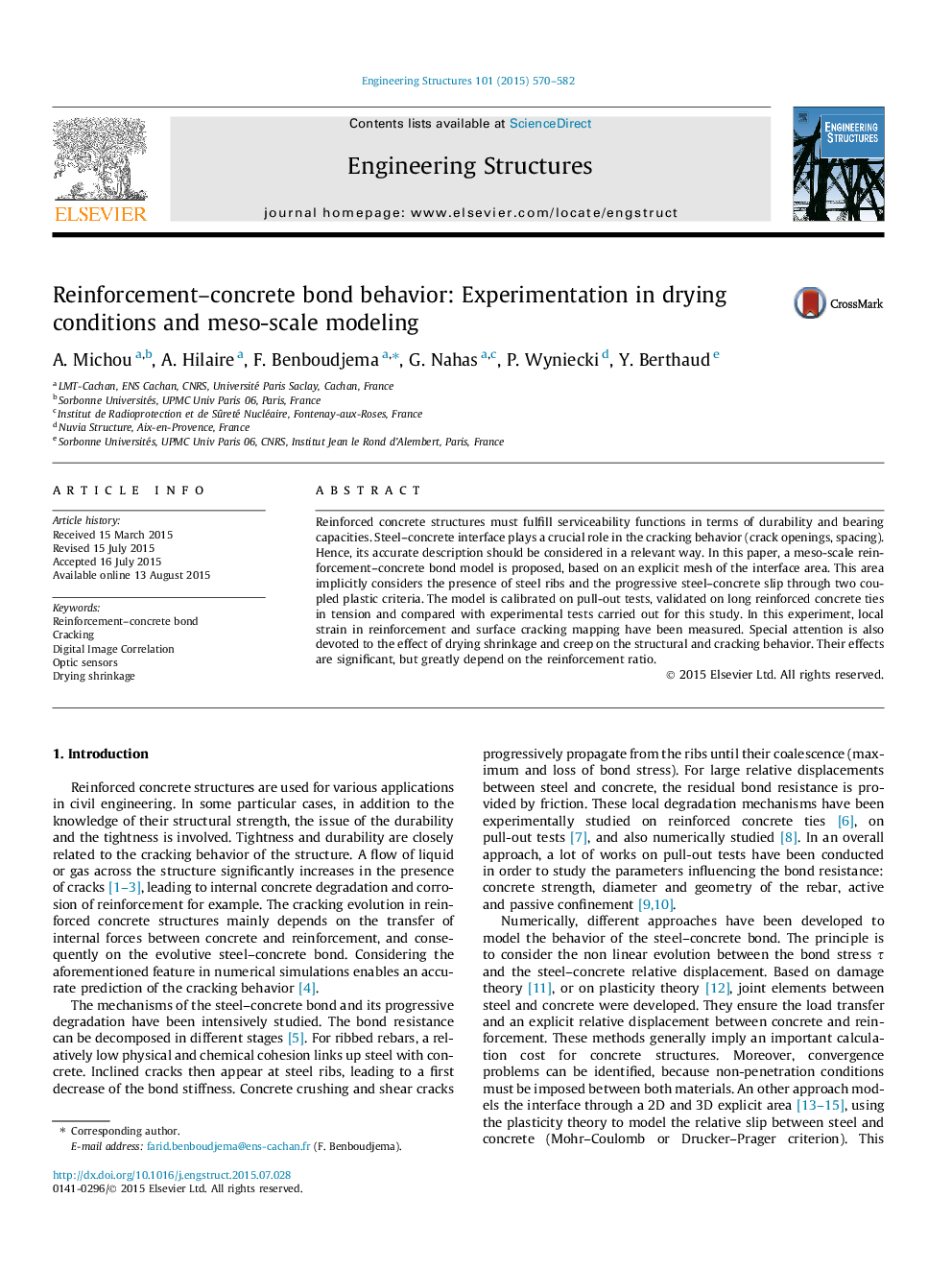| Article ID | Journal | Published Year | Pages | File Type |
|---|---|---|---|---|
| 266065 | Engineering Structures | 2015 | 13 Pages |
•A meso-model is developed for concrete/steel bond.•The influence of restraint shrinkage by steel bars is taken into account.•Strain fields in embedded rebars have been measured by fiber optic sensors.•Digital Image Correlation has been used for cracking pattern characterization.
Reinforced concrete structures must fulfill serviceability functions in terms of durability and bearing capacities. Steel–concrete interface plays a crucial role in the cracking behavior (crack openings, spacing). Hence, its accurate description should be considered in a relevant way. In this paper, a meso-scale reinforcement–concrete bond model is proposed, based on an explicit mesh of the interface area. This area implicitly considers the presence of steel ribs and the progressive steel–concrete slip through two coupled plastic criteria. The model is calibrated on pull-out tests, validated on long reinforced concrete ties in tension and compared with experimental tests carried out for this study. In this experiment, local strain in reinforcement and surface cracking mapping have been measured. Special attention is also devoted to the effect of drying shrinkage and creep on the structural and cracking behavior. Their effects are significant, but greatly depend on the reinforcement ratio.
